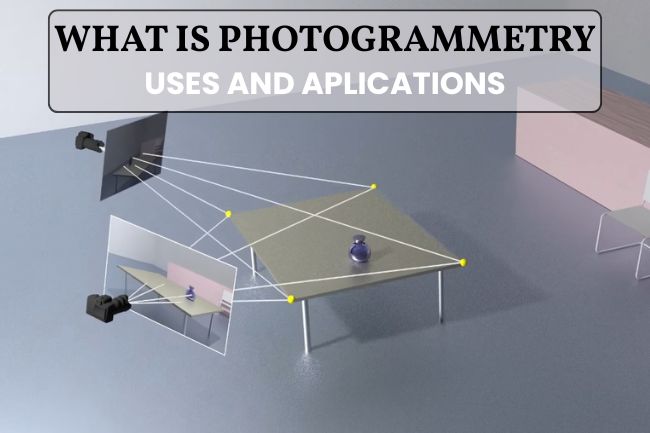
What is photogrammetry?
We can say that photogrammetry is the technique that allows us to obtain three-dimensional information about an object or space from photographs. But what exactly what is photogrammetry, and what are its applications?
Photogrammetry is the process of obtaining metric and geometric information from images taken from different angles to create detailed and accurate plans, maps, or digital models.
This technology is widely used in various industries, from surveying to archaeology, and has revolutionized the way we capture and analyze three-dimensional space.
In this post, we will deeply investigate what photogrammetry is, its applications, advantages, and the process behind this fascinating technique.
Table of contents
History and evolution of photogrammetry
Photogrammetry is not a new discipline. On the contrary, its origins date back to the 19th century, when pioneers began using aerial photographs to map large areas of land.
Over time, advances in photographic and computer technology have enabled photogrammetry to evolve in leaps and bounds. From being a manual and laborious technique, it has become an automated and highly accurate process.
Initial process
In its early days, photogrammetry required arduous manual interpretation of photographs, using stereoscopes to view double images and calculate dimensions and distances.
With the advent of computers and their technological development, this process was simplified and became more accurate, allowing for more detailed and rapid analysis of images.
How does photogrammetry work?
Photogrammetry is based on the principle that an object can be reconstructed in three dimensions from multiple two-dimensional images taken from different angles.
This principle is similar to that of human stereoscopic vision, where the brain uses the differences in perspective between the two eyes to perceive depth.
How does photogrammetry work?
Types of photogrammetry
Aerial photogrammetry
It is carried out from elevated platforms such as drones, aircraft, or satellites. It is the most commonly used method for obtaining an overview of large areas, as it allows for the creation of highly accurate topographic maps, digital terrain models, and orthophotos.
Terrestrial photogrammetry
It consists of capturing images at ground level using conventional cameras or scanners mounted on tripods, vehicles, or even manually. It is used in architecture, civil engineering, archaeology, and heritage.
Applications of photogrammetry
Photogrammetry has a wide range of applications in various fields, such as:
Surveying and cartography
Photogrammetry is used to create accurate topographic maps, allowing surveyors to measure and analyze terrain in great detail without having to physically visit the site.
Architecture and engineering
In architecture, it is used to create 3D models of buildings, which facilitates planning and restoration work. In engineering, it is used to inspect the condition of infrastructure such as bridges and roads.
Archeology
Archaeologists use photogrammetry to document and analyze archaeological sites or heritage recovery, enabling accurate digital preservation of historical sites that may be fragile or otherwise inaccessible.
Entertainment industry
In movies and video games, this technique is used to create realistic virtual environments and characters, achieving higher visual quality in productions.
Advantages of photogrammetry
-
- Accuracy and detail: it is undeniable that photogrammetry offers millimeter precision in measuring objects and terrain.
-
- Efficiency: enables rapid and detailed analysis without the need for extensive fieldwork.
-
- Versatility: it can be applied in multiple industries and for multiple purposes, from mapping to digital content creation.
-
- Cost-effectiveness: it is often more economical than other three-dimensional measurement techniques, such as laser scanning.
Challenges and limitations
Despite its many advantages, photogrammetry also faces certain challenges, which we detail below:
-
- Image quality: The accuracy of the 3D model still depends largely on the quality and quantity of the photographs captured.
-
- Environmental conditions: factors such as lighting and weather can affect image quality and, therefore, the final model.
-
- Computational complexity: Processing large volumes of data to create three-dimensional models can be computationally demanding and intensive.
The future of photogrammetry
With continuous advances in artificial intelligence and drone technology, the future of photogrammetry promises to be even more sophisticated and exciting.
For example, the use of drones to capture aerial images is expected to improve efficiency and coverage, while artificial intelligence will help automate and improve the accuracy of image processing.
Another element to consider regarding the future of photogrammetry is already present: videogrammetry and how this technology is replacing many areas of current photogrammetry thanks to 2fvideomodeling software. Similarly, we should mention the existence of a portable 3D scanner: 2fSLAM, and also how videogrammetry interacts with GNSS-RTK measurement systems and total stations in products such as 2fImaging.
Conclusion
Indeed, photogrammetry is a powerful tool that has transformed our ability to capture and analyze the world in three dimensions.
Its successful application in various industries has not only improved the accuracy and efficiency of numerous processes, but has also opened up new possibilities for constant innovation and discovery.
If you require versatile and accurate photogrammetry equipment for your professional projects, our 3D scanning company has the most comprehensive and sophisticated equipment on the market, guaranteeing high-quality three-dimensional spatial analysis.